'Millions of sparks': Weather raises Australia's fire danger
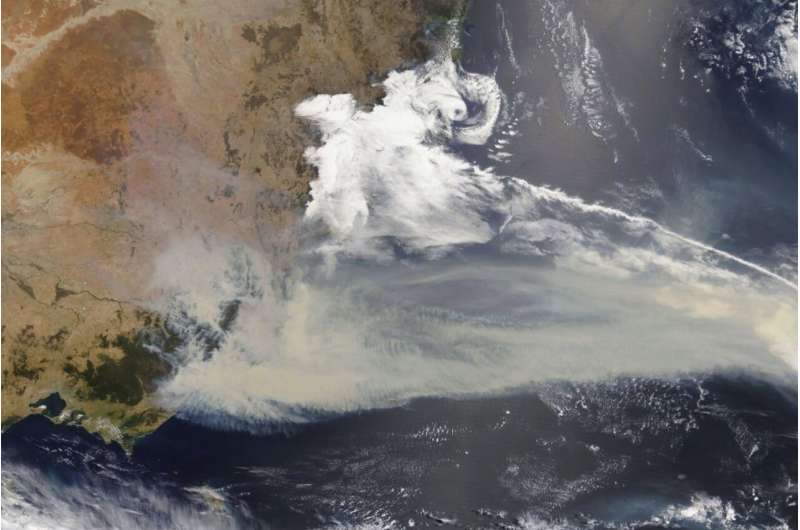
Navy ships plucked hundreds of people from beaches and tens of thousands were urged to flee Friday before hot weather and strong winds in the forecast worsen Australia's already-devastating wildfires.
More than 200 fires were burning, and warnings of extreme danger to come Saturday set in motion one of the largest evacuations in Australian history. Thousands have already fled at-risk coastal areas, creating traffic gridlock in places, and firefighters escorted convoys of evacuees as fires threatened to close roads.
Victoria Premier Daniel Andrews declared a disaster across much of the eastern part of the state, allowing the government to order evacuations in an area with as many as 140,000 permanent residents and tens of thousands more vacationers.
"If you can leave, you must leave," Andrews said.
South Australia state's Country Fire Service chief officer Mark Jones said the weather conditions were cause for concern because some fires were still burning or smoldering.
"The ignition sources are already there," he said. "There are millions of sparks out there ready to go if they break containment lines."
The early and devastating start to Australia's summer wildfires has made this season the worst on record. About 5 million hectares (12.35 million acres) of land have burned, at least 19 people have been killed, and more than 1,400 homes have been destroyed.
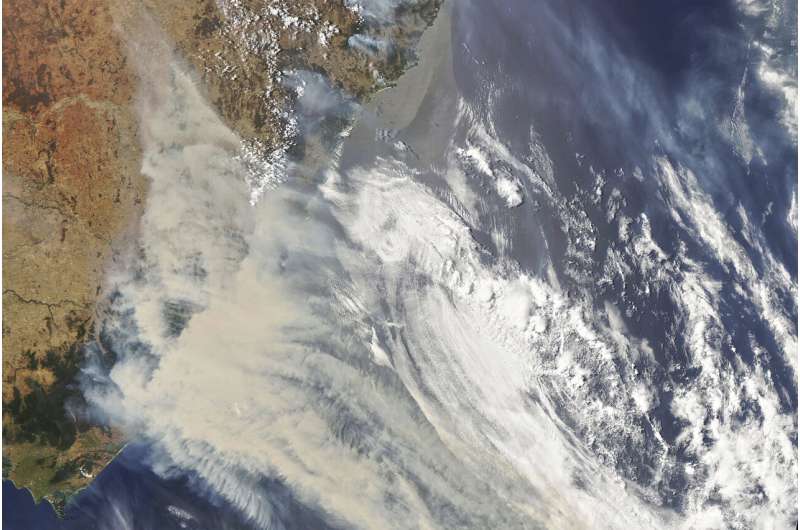
This week, at least 448 homes have been destroyed on the New South Wales southern coast and dozens were burned in Victoria. Ten deaths have been confirmed in the two states this week, and Victoria authorities also say 28 people are missing. Fires are also burning in Western Australia, South Australia and Tasmania.
The navy was evacuating hundreds from the Victorian coastal town of Mallacoota, which has been cut off for days by wildfires, forcing as many as 4,000 residents and tourists to shelter on beaches. Landing craft ferried people to the HMAS Choules offshore.
Evacuees waiting to board the ship described smoke and embers flying everywhere when the fires were at their worst.
"It's just scary waiting," Dani Barmeister told Channel Nine. Another person waiting, Natalie Morrissey, said of the emotional wait while the fires threatened, "It's something that I want to forget."
Choules Commander Scott Houlihan said 963 people had signed up for evacuation by sea and more had been airlifted to safety.
In New South Wales, a state of emergency and a total fire ban were in place.
State Rural Fire Service deputy commissioner Rob Rogers said strong winds and high temperatures Saturday will make the fire danger worse in many areas and urged those who can flee to do so.
"We know people have got a little bit of fire fatigue. They've been dealing with this now for months," Rogers said. "But we need people to stay focused. Tomorrow is not the day to drop your guard. Take it seriously. If you're in those areas where we put those maps out, do not be there."
Prime Minister Scott Morrison said he was inclined to cancel a scheduled trip to India later this month because of the wildfires. In December, he cut short a family holiday in Hawaii in the face of public anger at his absence.
He is due to visit India on Jan. 13-16 and previously had said recent deadly riots over India's new citizenship trips laws would not cause him to cancel.
He made the remarks in Bairnsdale, Victoria, where he received a warmer welcome than he had in another wildfire-ravaged town a day earlier.
Morrison cut short the visit to Cobargo in New South Wales when locals yelled at him, made obscene gestures and called him an "idiot" and worse, criticizing him for the lack of equipment to deal with the fires in town.
In a radio interview , Morrison said he understood the anger of people affected by the fires.
"People are angry and people are raw and people are upset," he said. "Whether they are angry with me or they are angry about the situation, all I know is they are hurting and it's my job to be there to try and offer some comfort and support."
-
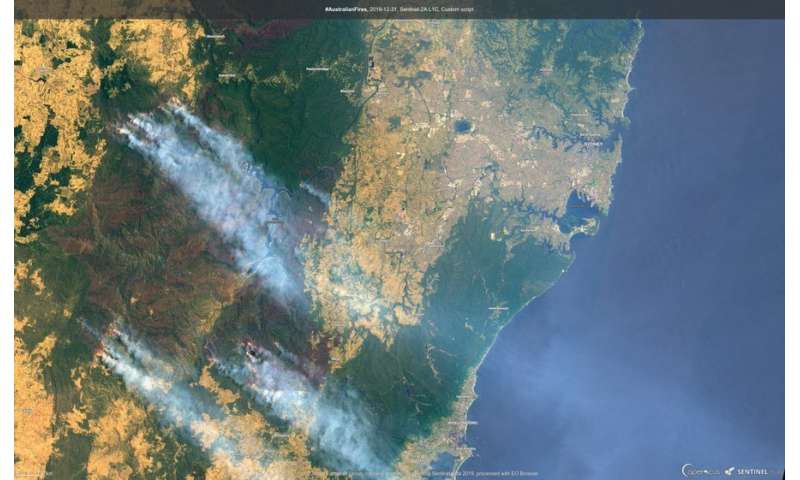
In this satellite image released by Copernicus Sentinel Imagery, 2020 twitter page dated Dec. 31, 2019, fires burning around Sydney, Australia. (Copernicus Sentinel Imagery via AP) -
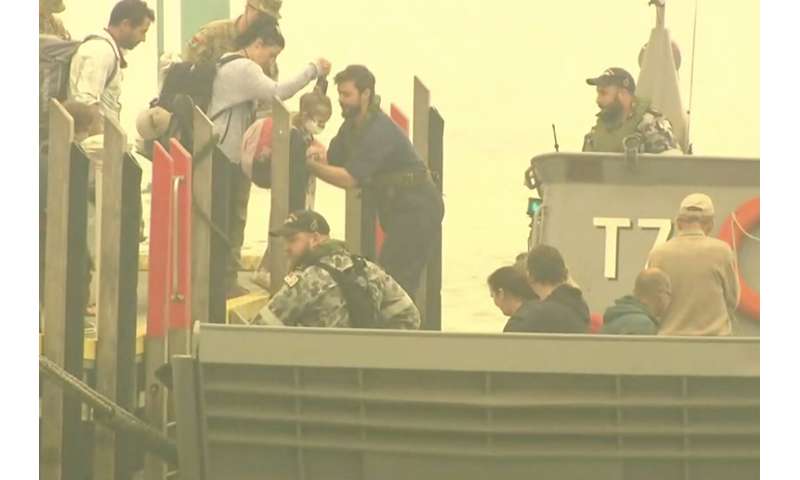
In this image from a video, people get in a boat in Mallacoota, Australia Friday, Jan. 3, 2020. Navy ships plucked hundreds of people from beaches and tens of thousands were urged to flee Friday before hot weather and strong winds in the forecast worsen Australia's already-devastating wildfires. (Channel 9 via AP) -
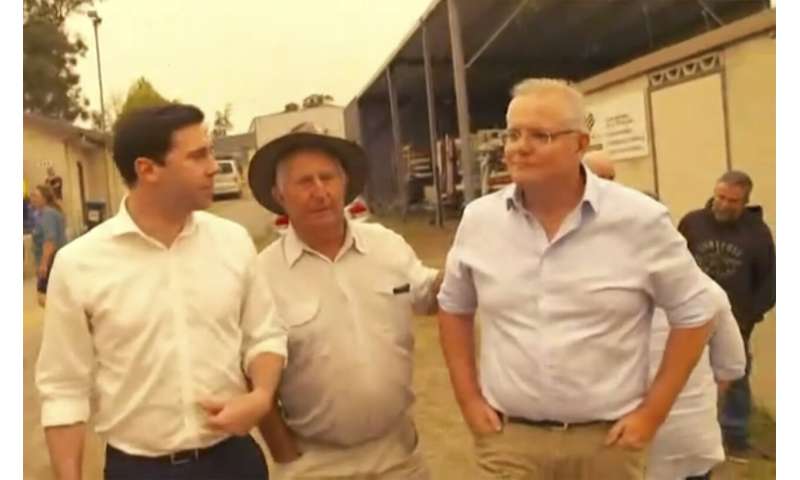
This still image taken from video provided by AuBC, Australian Prime Minister Scott Morrison is confronted by angry residents as he visited a wildfire-ravaged Cobargo, in New South Wales on Thursday, Jan. 2, 2020. The outpouring of anger came as authorities said 381 homes had been destroyed on the New South Wales southern coast this week. More than 200 fires are burning in Australia's two most-populous states. (AuBC via AP) -
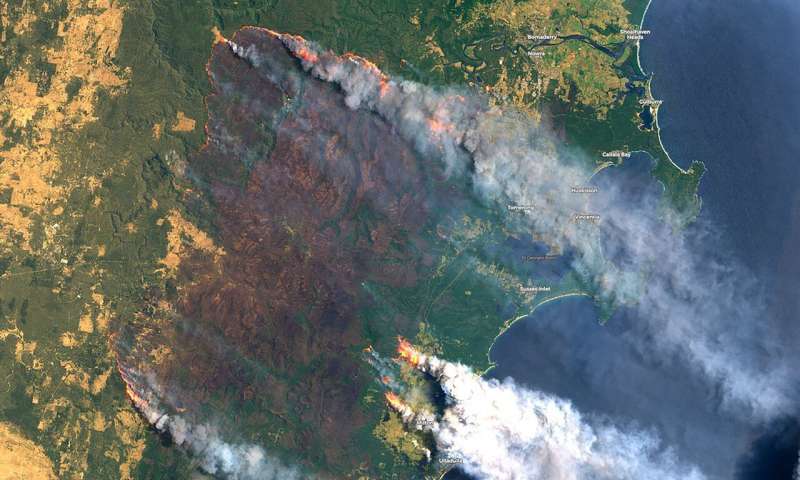
In this satellite image released by Copernicus Sentinel Imagery, 2020 twitter page acquired Dec. 31, 2019, shows the Clyde Mountain Fire, 200 kms. (124 miles) south of Sydney, Australia. (Copernicus Sentinel Imagery via AP) -
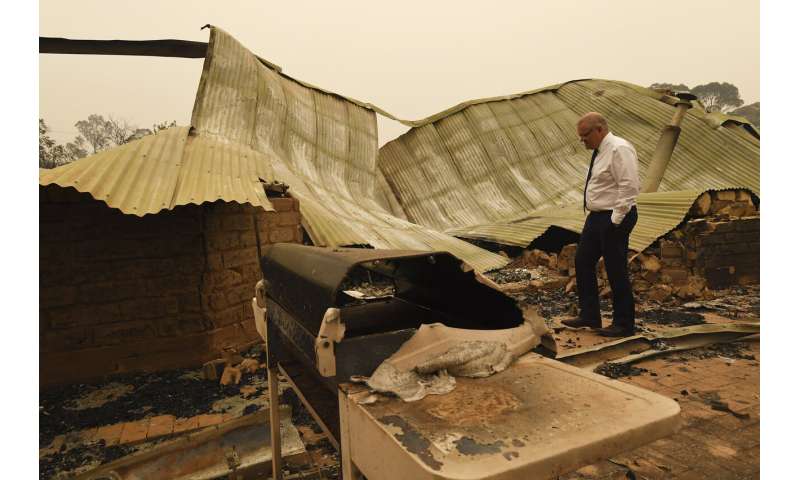
Prime Minister Scott Morrison tours the fire devastated Wildflower farm owned by Paul and Melissa Churchman in Sarsfield, Victoria, Friday, January 3, 2020. Navy ships plucked hundreds of people from beaches and tens of thousands were urged to flee before hot weather and strong winds in the forecast worsen Australia's already-devastating wildfires. (James Ross/AAP Image via AP) -
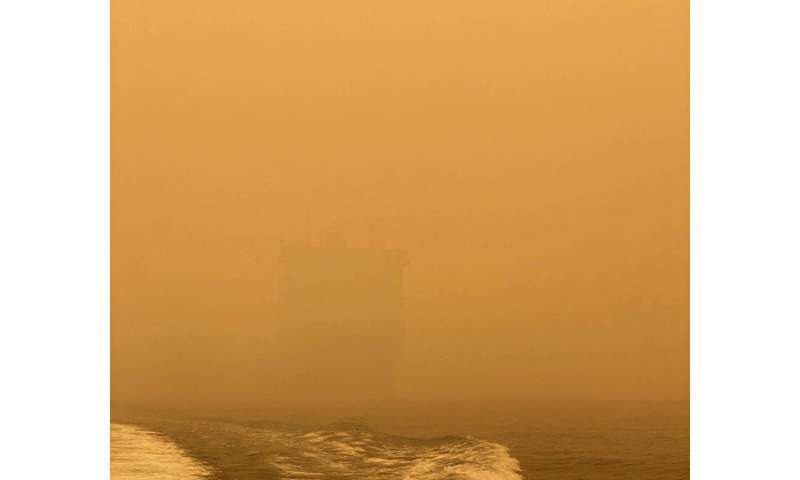
In this photo provided by the Australian Defence Force, HMAS Choules appears as a ghostly figure through smoke haze off the coast of Mallacoota, Australia, Thursday, Jan. 2, 2020. The Australian Defence Force is moving naval assets to Mallacoota on a supply mission that would last two weeks and helicopters would also fly in more firefighters since roads were inaccessible due to wildfires. (Australian Defence Force via AP)
Smoke from the wildfires has choked air quality and turned daytime skies to near-nighttime darkness in the worst-hit areas.
Sydney University ecologist Chris Dickman told the Sydney Morning Herald nearly 500 million animals—birds, reptiles and mammals—are likely to have perished in New South Wales alone. Frogs, bats and insects are excluded from his estimate, making the toll much greater.
The smoke has also blown across the Tasman Sea into New Zealand, where skies are hazy and glaciers have turned a deep caramel brown. The color change may cause more melting since the glaciers will reflect less sunlight.
© 2020 The Associated Press. All rights reserved.



















